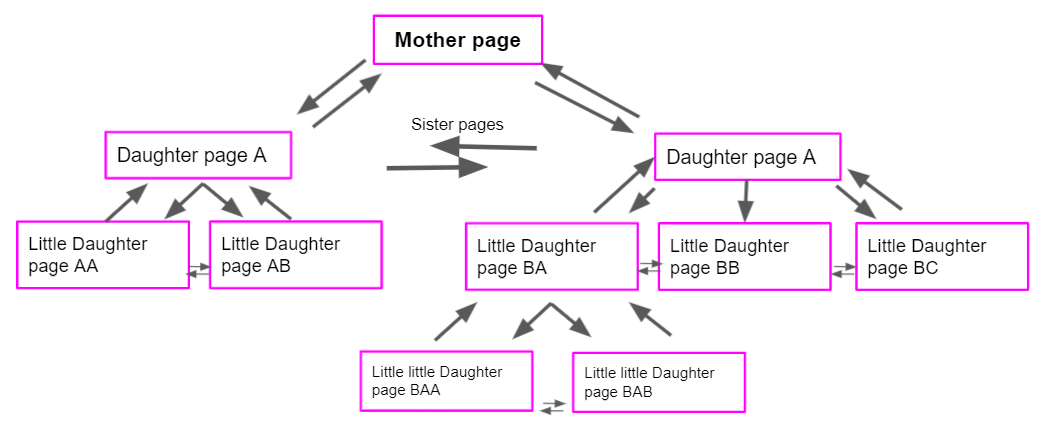To produce content that Google likes, and for a long time!
Table of contents :
Well-structured content
Content at least as long as the competition
Content that is well mapped internally
Content integrated into topic cluster
Regularly updated content
The whole point of using Semji is to save you time in producing content that is perfectly optimized for Google. In other words, content that's tailored to users' intentions, that ranks high enough in Google results to generate traffic and meet your strategic objectives.
What are the essential criteria for ensuring content SEO optimization and performance?
Well-structured content
A content will only make sense for its audience if it is well organized. To do so, you must first create a plan with titles and subtitles (the "Headings" or "Hn", using Search Intents) in which keywords will be integrated. This practice is particularly useful as Google gives great importance to headings when assessing the relevance of a content on a given theme.
Again, you should think User intent.
- What is the visitor looking for in my content?
- Which question(s) should I answer?
- Which information should be addressed first, then second?
Think also that your reader can fly over the page, make a diagonal reading. Therefore, long contents should have a clickable summary to give quick access to the information and facilitate navigation.
Semji provides you with recommendations on the keywords and sentences you should include in your headings to optimize your content. Check out our article dedicated to Search Intents to master this SEO criteria.
Content at least as long as the competition
Studies have shown that the content ranked in Google's top positions is most often long-form content. And by long, we often mean more than 1,500 words. Internet users generally prefer to move around and scroll within a long, exhaustive page, rather than having to click on several links to access different short contents and find the desired information.
During the analysis Semji performs after you've chosen your main keyword, Semji scans your competitors' pages and calculates the length of their content. Based on this, our algorithm then tells you the recommended length for the content you are producing. Read our dedicated article to find out more about recommended length.
Content that is well mapped internally
Links within an article are really important, they help :
- users to navigate easily between contents, go deeper into a subject, keep the visitor on he website and easily give him what he's looking for.
- Google to identify semantically related contents and thus to reinforce the authority of the site on this theme.
When linking content together, several issues must be kept in mind:
- Strategic linking facilitates the visits of Google bots on the pages and their indexing. You can then choose to increase the number of internal links to a particular page to give it more importance through Google's eyes.
- Contextual linking suggests "similar content" to your user or content that could be of interest to them in the continuity of their search. You will then use semantic and thematic opportunities within your paragraphs to link to other related content.
If there is no absolute value regarding the number of links within a content, it is still recommended to include them systematically within a content. Semji has defined rules in this regard: to learn more, see our articles on Incoming Links and Outgoing Links.
Content integrated into topic cluster
Alone in its corner, a content does not have much weight. Today in SEO, a good practice is to produce several contents around the same theme, and to create a logical tree structure between the contents, from the most general content to the most specific content. This is called the topic cluster.
Here are the main steps:
- Define the main theme on which to create a pillar page or "Mother page". This page aims to rank for one of your generic keywords, defined earlier
Exemple : home insurance - Then define subtopics to identify other, more specific content topics. These will be your "Daughter pages".
Example: tenant insurance, second home insurance, home insurance cancellation, home insurance change...
The objective of the Daughter pages is to rank for these secondary keywords but nevertheless strategic for your activity.
It is the internal linking that will allow Google and the Internet user to understand the tree structure : which page is the Mother (the most general), which ones the Daughters (more specific).

On this diagram, each arrow represents an internal link.
Want to learn more about setting up semantic cocoons? Read our white paper on the subject.
Regularly updated content
A website on a SERP (Search engine result page) is a bit like a boat on the open sea: there is wind, waves, and it moves. Normal, competitors are blowing ! To stay in the game, you have to adapt to the weather and often review your trajectory. In SEO, your watchword will be regular content updates.
Semji is designed to make this simple through real-time recommendations based on Google's ranking criteria and on your competitors. You can rework a content already produced with Semji Platform 6 months later: refresh the analysis with the "Update" button to get up-to-date recommendations.

Thanks to Semji, your content adapts to the fluctuations of Google results. You maintain an edge over your competitors by always sticking to your users' intents.
Remember: your competitors regularly update their content in order to move up in Google results. Don't neglect this aspect !
Optimizing existing content can bring you as much profit as creating new content.
Did you know that? Other criteria, that can be related to your site, have an impact on a content performance: the loading speed, the number of links referring to your content (backlinks)... Find out more !
